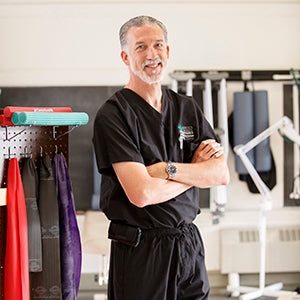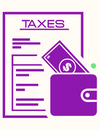
Let me first say that if reading isn't your thing, there's a video with all this information on our YouTube channel and you can find and subscribe to it HERE.
No doubt along your journey into musician-hood you had a helpful music teacher introduce an acronym to aide you in memorizing those lines and spaces. Every Good Boy Does Fine, Good Burritos Don’t Fall Apart and FACE get ingrained in our memory until the day we become the now-helpful-teacher passing them along to our students.
There’s no shortage of beginning music methods or curriculums out there these days for those of us who find ourselves now molding the minds of young students. But, there does seem to be a gaping hole in the supply of acronym-based music education that I’d like to offer which is that:
Musicians Need To Learn Basic Biology
Before I tell you what it stands for let’s get a few facts out of the way:
- A 1987 study by the International Conference of Symphony and Opera Musicians (ICSOM) found that 76% of their members had experienced a playing injury that seriously affected their performance.
- A 2012 study in Australia which surveyed the musicians in the eight full-time symphony orchestras found that 84% of participants had experience pain or injuries that had interfered with playing their instruments or participating in normal orchestral rehearsals and performances.
These numbers show we're actually increasing in the amount of musicians experiencing injuries! So back to the acronym, Musicians Need To Learn Basic Biology or:
Muscles, Nerves, Tendons, Ligaments, Bones, and Blood
You remember those basic things going on inside of us that were pushed out of our memories to make room for Bach Preludes, so let’s break down these basics that make us whole people to find out why they’re as fundamentally important to us as a whole note.
Muscles
These things move us. Literally. Not that, “I heard Mahler Symphony No. 2 for the first time” type of moved but literally, they move us.
Muscles work by contracting and relaxing. They can pull our body into a new position but they can’t push us back, they can only relax us back. So they usually work in buddy systems with pairs of muscles; a flexor and an extensor.

When you prepare to play an instrument, your elbow bends. This causes the bicep muscle to flex. As long as your elbow is bent, your bicep is in flexion. When you’re done playing, your tricep muscle extends to straighten your arm back out.
But problems can happen when the arm is flexed or bent, for too long. This over works the flexor and underworks the extender. Now the bicep is stronger and the tricep is weaker. Muscles in constant flexion are shortened and should be stretched out to keep life balanced between the two buddies.
Muscles like the tricep and bicep are skeletal muscles, they hold our skeleton together and are controllable and growable but also get tired out. Muscles we can’t control are called smooth or involuntary muscles. These are the muscles that breathe without thinking, digest our food, or are the cardiac muscles that work our hearts.
Nerves
Our muscles wouldn’t get too far without nerves. They wouldn’t get anywhere actually. Both voluntary and involuntary muscles rely on coordination signals from the brain via our nerves.
Involuntary muscle movements are buried deep in our brain stem near the connection to the spinal cord while our voluntary muscles have connections in the cerebellum and motor cortex.

The motor cortex, located higher on the brain, sends out a signal telling a muscle to move and the cerebellum then coordinates the muscle movements being signaled. The signal then travels down the spinal cord to the peripheral nerves and tells them to move the muscles. The peripheral nerves translate signals back to the cerebellum to tell it where the muscle currently is and what it’s doing. The resulting communication repeats multiple times resulting in smooth movements.
This brain to muscle communication via our nerves is happening constantly and insanely quickly. But it can be easily interrupted. A pinched nerve can cause pain, numbness, tingling, weakness and limited muscle usage. Pinched nerves may result from swollen or tightened muscles or pressure from nearby bones. Pinching in spinal column nerves may result in poorer muscle response anywhere in the body.
You’re maybe getting some returning memories of high school bio with all this talk of muscles and nerves but there are a couple of basics that often get overlooked.
Tendons and Ligaments
Tendons are slightly flexible cords made of collagen tissue that connect muscles to bones. Ligaments are tougher, shorter cords of connective tissue which connect bone to bone, like in a joint.
Tendons are important because they let the structure of our body move by connecting muscles to bones. Ligaments are important because they stabilize our joints by connecting bones to bones.
Tendons are, however, often damaged through repetitive motions. While the muscle may strengthen, the flexible college tissue aka the tendon, may actually weaken. Most injuries result from repetitive micro tears over a long period of time which can lead to a macro tear or resulting in the dreaded medical word: tendinitis.
Ligaments are most often damaged through sudden trauma or a large stress, such as a fall, that places sudden weight improperly on a joint.
Bones
Perhaps most obvious one, bones are what give us shape and structure. Our muscles, nerves, ligaments, and tendons would be nothing more than a skin-covered blob on the floor along with the rest of us if it weren’t for our skeleton.
Bones are both lightweight enough to move and also strong enough to support and protect us. A combination of proteins, collagen and calcium phosphate, bones are made up of two types of tissues:
- Compact bones: the strong and hard outer part of the bone and,
- Cancellous bone: the soft, spongy looking inside where bone marrow is found.
One thing to note, broken bones are really just large fractures. While smaller fractures may need less healing time, any significant bone fracture will hurt when you try to put weight on or move the injured bone. The good news is, unless you are struggling with a bone disorder it takes some intense force to fracture a bone which means music won’t likely be the cause of skeletal injuries.
However, everyone begins to lose bone mass after age 40 which makes the skeletal system more susceptible to injury. Keep up a calcium rich diet and some weight bearing activities to keep the bones strong and you’ll prolong your bodies ability to move. Also, avoid dropping a timpani on your foot or rolling a piano over your toe. Most fractures require splints, slings or casts and they will cut down your mobility and practice ability.
Blood
Blood, which is made in the soft part of our bones is our life force. It is made up of four main components.
- Plasma, a liquid that transports nutrients, proteins and hormones through the body makes up about 55% of our blood stream.
- Red blood cells are the second largest component to our blood although they tend to get the most cred due to their color. Their job is to supply our body with oxygen and remove carbon dioxide.
- White blood cells are part of our bodies immune system which means they find and fight viruses and bacteria.
- Platelets, which make up less than 1% of our blood, form clots to stop bleeding and repair cuts and wounds.
While you might not think of blood as something that could have an impact on your musical career short of an inconvenient cut on your finger, circulation is vital to the function of our muscles. (Find ways to improve circulation here.)
That’s because everything is connected. The bones protect the nerves and make the blood, the tendons and ligaments hold the bones and muscles together, the blood supplies the muscles and brain with the oxygen necessary for communicating thought process and action along the nerves to the muscles to move the bones and the cycle continues.
Just like you can’t get far in music reading until you learn your ABC’s and Do-Re-Mi’s you won’t stand a chance at an injury-free career until you have a basic knowledge of your-bod-ies.
If you break an instrument, worst comes to worst, you can always buy a new one but there’s no new you. So get equipped with the information you need for less pain, more music and greatness!
Be sure you're following us on Instagram for daily updates and subscribe to our YouTube channel for easy access to and explanations of those biology and injury words you've heard and how they impact your music practice.







